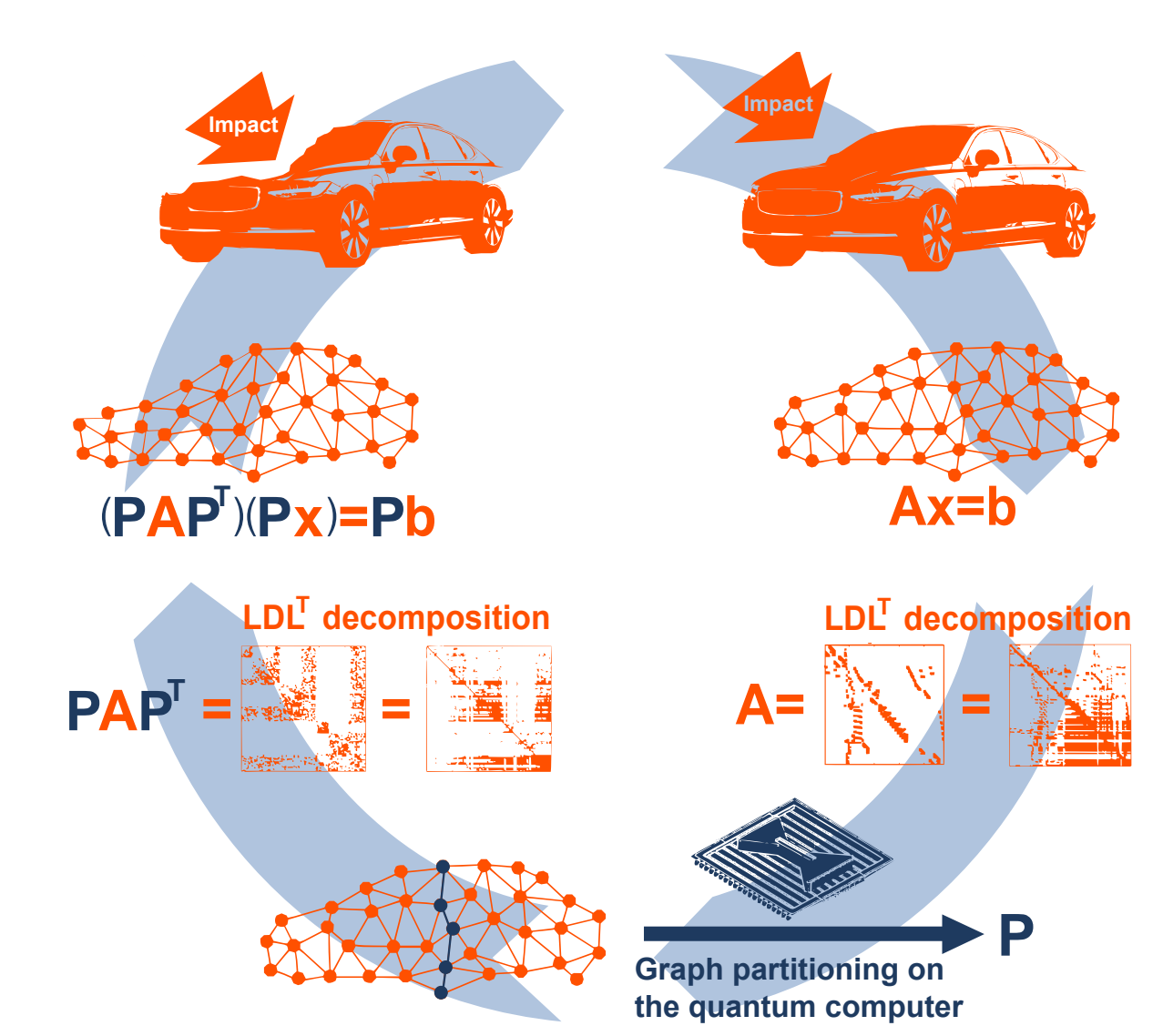Funding spree, PsiQuantum, DeteQt, TreQ, OQtopus and lots of random numbers - The Week in Quantum Computing - March 31st 2025
Issue #228
Quick Recap
Iceberg Quantum raised $2 million to integrate PsiQuantum’s photonic qubits into HPC workflows, while PSiQuantum is seeking $750 million to reach a $6 billion valuation for large-scale photonic systems. DeteQt at the University of Sydney Nano Institute received $750,000 to develop diamond-on-silicon magnetometers, and IonQ with Ansys declared a 12% speed boost in a simulation—though critics noted the test ran on a classical simulator. TreQ debuted the Compass SG25B featuring Rigetti’s Novera 9-qubit processor, Qblox controls, QuantrolOx automation, and a Bluefors refrigerator, offering open, scalable research capabilities worldwide. The University of Osaka launched the OQTOPUS open-source OS, and Quantinuum’s H2-1 trapped-ion device generated over 71,000 verifiably random bits, verified on supercomputers. Another Quantinuum group tackled knot theory with a new end-to-end quantum algorithm. Overall, strong investments, emerging software frameworks, and promising quantum research mark a week of steady progress toward practical systems in 2025.
The Week in Quantum Computing
TreQ Launches Compass SG25B: A Quantum Computing Breakthrough Built On Open Architecture And Industry-Leading Partnerships
TreQ’s Compass SG25B—a new open-architecture quantum computing system—debuted on March 17, 2025, in Anaheim, California. It integrates Rigetti Computing’s Novera 9-qubit processor, Qblox’s modular control stack, QuantrolOx’s Quantum EDGE automation, and Bluefors’ compact dilution refrigerator. “We break down barriers to quantum research,” stated TreQ, highlighting Compass SG25B’s ability to eliminate infrastructure bottlenecks. Extensibility and low-level access enable researchers to customize experiments and accelerate discovery. Meeting performance targets in February 2025, the system is now available globally, reflecting a milestone for quantum progress this year: increased collaboration among diverse partners powers faster experimentation, ultimately shaping more flexible quantum computing solutions as researchers continue pushing technological frontiers.
IonQ & Ansys: Crying Wolf
IonQ and Ansys claim a “major quantum computing milestone, demonstrating quantum computing outperforming classical computing,” citing a 12% runtime boost in an Ansys simulation. Yet writer Will Kirkpatrick says the improvement came only when a “Blood Pump” test was artificially adjusted and actually ran on a classical simulator, not IonQ’s hardware. Other evaluated cases saw no speedup, and IonQ did not publish quantum processor runtimes. “By running the application on IonQ’s quantum computers, Ansys was able to speed processing performance by up to 12 percent,” IonQ stated, though no real quantum advantage was shown. In 2025, such statements prompt caution from a community eager for genuine breakthroughs rather than marketing-driven fanfare.
Iceberg Quantum Launches with $2M
Iceberg Quantum launched with $2 million in seed funding and a partnership with PsiQuantum to boost HPC integration in quantum computing. Iceberg Quantum’s CEO commented, “We are excited to explore photonic quantum breakthroughs with PsiQuantum.” This collaboration merges HPC resources with PsiQuantum’s photonic qubit expertise to tackle algorithm refinement and scalable hardware. The move is critical for bridging complex simulations and quantum workloads in 2025, addressing stability and error-correction issues. By harnessing photonics, both entities intend to push quantum performance deeper into data centers, unlocking new frontiers in computational power.
https://www.hpcwire.com/off-the-wire/iceberg-quantum-launches-with-2m-and-psiquantum-partnership/
PsiQuantum raising at least $650M at $6B valuation
PSiQuantum is raising at least $750 million, pushing its valuation to $6 billion in 2025, according to Reuters. Leadership affirms confidence in photonic qubits, noting, “Our optical approach promises scalability and error suppression,” reflecting increased optimism for quantum feasibility. Industry observers highlight the significance of this round, seeing it as a boost for breakthroughs in fault-tolerant systems crucial to real-world quantum applications. With photonic methods reducing overhead compared to superconducting qubits, PSiQuantum’s funding signals continued momentum across the broader quantum ecosystem.
University of Sydney spin-out DeteQt lands $750K for quantum sensing innovation
In 2025, spin-out DeteQt from the University of Sydney Nano Institute secured $750,000 in pre-seed funding from Main Sequence Ventures and ATP Fund. Led by Adjunct Professor Jim Rabeau, who formerly held roles at Microsoft, Deloitte, and CSIRO, DeteQt is developing diamond-on-silicon quantum magnetometers for GPS-denied navigation, critical mineral exploration, and portable medical imaging. “Our technology is designed to address some of the world’s biggest challenges,” said Rabeau. With a $3 million Australian Defence Force contract and collaborations with Fleet Space and US-based OneScan, the startup integrates nitrogen-vacancy diamond sensors with silicon fabrication for mass scalability. Interest in DeteQt underscores 2025’s push for tangible quantum solutions, bringing academic breakthroughs closer to widespread deployment.
Top quantum algorithms papers - Winter 2025 edition
Quantum computing experts Juan Miguel Arrazola and Danial Motlagh spotlight five groundbreaking papers in the last quarter, highlighting “significant reductions in cost of Hamiltonian simulation” and a “major acceleration of electronic structure calculations.” They also showcase progress in quantum LDPC codes, QSP pre-processing, and atom loss error mitigation.
https://pennylane.ai/blog/2025/03/top-quantum-algorithms-papers-winter-2025/
Meet “qudits”: more complex cousins of qubits boost quantum computing
In March 2025, Davide Castelvecchi detailed how qudits—multi-state counterparts to qubits—accelerate quantum-field simulations and reduce errors. At the University of Innsbruck, Martin Ringbauer showed that “this qudit approach is not a solution to everything” yet advances efficiency by encoding more information in ions or photons. Christine Muschik of the University of Waterloo reflected, “If I could go back in time to my old self, I would tell her: why waste time with qubits?” IBM and Google hardware already support such multi-level states. These findings, published in Nature Physics and Physical Review Letters, signal a powerful path forward for simulating complex phenomena in quantum computing, enhancing the versatility researchers have yearned for in 2025.
https://www.nature.com/articles/d41586-025-00939-x
OQTOPUS: Researchers launch open-source quantum computer operating system
Researchers from the University of Osaka, Fujitsu Limited, Systems Engineering Consultants (SEC), and TIS Inc. have introduced OQTOPUS, an open-source quantum computing operating system in 2025. The collaboration drives advanced quantum algorithms and community-based development. Through universal accessibility, OQTOPUS fosters cross-platform integration and lowers barriers for new research breakthroughs. Freed from proprietary constraints, scientists optimize quantum resources more effectively. The initiative signals growing institutional engagement to accelerate quantum technologies that could transform cryptography, drug discovery, and high-performance computing. This signifies a broader commitment this year to deepen cross-sector collaboration and push quantum frontiers.
https://phys.org/news/2025-03-oqtopus-source-quantum.html
Certified randomness using a trapped-ion quantum processor
On 26 March 2025, Minzhao Liu and colleagues used the 56-qubit Quantinuum H2-1 trapped-ion quantum computer to generate 71,313 certifiably random bits. Citing “the classical hardness of random circuit sampling,” they combined a massive 1.1×10^18 floating-point operations per second on supercomputers for verification. Scott Aaronson, involved in the research, underscores the significance of generating random bits “beyond classical capabilities.” Institutions ranging from industry to national labs participated, stressing the power of near-term quantum devices in critical tasks like secure cryptography. “Our results demonstrate a step towards the practical applicability of present-day quantum computers,” the authors note, presenting a milestone for cryptographic randomness in 2025’s evolving quantum landscape.
https://www.nature.com/articles/s41586-025-08737-1
On the JPMC/Quantinuum certified quantum randomness demo
In 2025, JPMorgan Chase, Quantinuum, and DOE labs showcased the first cryptographically certified random bits from a 56-qubit quantum computer, as proposed by Scott Aaronson and Shih-Han Hung. Over 18 hours, they produced 70,000 random bits validated on Frontier and Summit supercomputers. “The new part, the part that requires a quantum computer, is all about the certification,” said Aaronson, emphasizing the breakthrough in ensuring true randomness in cryptography. Mark Zhandry’s earlier insights and collaborations with Or Sattath influenced the research, highlighting quantum’s unique capabilities. This achievement signals exciting progress toward robust cryptographic protocols, inspiring more work to address remaining security concerns and harness quantum computing’s evolving power.
https://scottaaronson.blog/?p=8746
The High Cost of Quantum Randomness Is Dropping
In 2025, quantum computing’s need for truly random states is spotlighted by new breakthroughs in “pseudorandom” unitaries (PRUs). “Generating randomness is pretty expensive,” said William Kretschmer of the Simons Institute. Researchers Fermi Ma and Robert Huang proved last October that PRUs can replicate Haar-random states without massive computational loads, assuming fundamental “one-way” cryptographic functions. “For the first time, we have very good evidence that pseudorandomness is a real concept,” noted Alexander Poremba of MIT. This work reduces the prohibitive complexity of traditional Haar-random unitaries and may catalyze more efficient quantum computing experiments, including quantum advantage demonstrations.
https://www.quantamagazine.org/the-high-cost-of-quantum-randomness-is-dropping-20250328/
Untangling the Mysteries of Knots with Quantum Computers
Quantinuum’s team, including Enrico Rinaldi, Chris Self, Eli Chertkov, Matthew DeCross, David Hayes, Brian Neyenhuis, Marcello Benedetti, and MIT’s Tuomas Laakkonen, unveiled an end-to-end quantum algorithm solving a key knot theory problem. “The relation between knot theory and quantum physics is the most beautiful and bizarre facts you have never heard of,” says team lead Konstantinos Meichanetzidis. Completed on the H2 system, soon boosted by Helios—potentially a trillion times more powerful—this 2025 breakthrough offers near-term quantum advantage. Knot invariants like the Jones polynomial underlie applications in cryptography, statistical mechanics, and solar physics, linking mathematics with quantum research championed by David Deutsch since the 1980s. These results suggest robust progress toward harnessing quantum power for real-world challenges.
https://www.quantinuum.com/blog/untangling-the-mysteries-of-knots-with-quantum-computers
QIA researchers create first Operating System for Quantum Networks
Quantum Internet Alliance (QIA) researchers at TU Delft, QuTech, University of Innsbruck, INRIA, and CNRS have introduced the first quantum network operating system, QNodeOS, published in Nature. “We’re making it possible…easily,” says Prof. Dr. Stephanie Wehner, highlighting simpler programming of quantum networks. “You don’t need to know how the hardware works,” adds QuTech’s PhD student Mariagrazia Iuliano, describing the OS’s hardware-agnostic design. QNodeOS coordinates separate programs on network nodes via entanglement, bridging quantum theory and real-world applications in 2025. Tracy Northup (University of Innsbruck) confirms its compatibility with different hardware platforms, underscoring broad potential. By removing barriers for developers, QNodeOS paves the way for new quantum applications and fosters global interest in advanced quantum networking.
The Quantum Cold War is Here
In 2025, Nema Milaninia and Michael Galdo warn that quantum computing has sparked a “Quantum Cold War” with global powers racing for breakthroughs. The US and China lead this race: The US enacts export controls inspired by National Security Memorandum 10, while China invests more than $15 billion in quantum research. Mike Pezzullo predicts that “Quantum computing combined with advanced AI will rule the world.” This technology threatens encryption, spurring reforms like quantum-resistant cryptography. The potential of qubits to revolutionize pharmaceuticals, finance, and communications intensifies calls for oversight. Yet absent an international framework, parallel quantum infrastructures may emerge, reflecting broader geopolitical tensions. Nations prioritize “Q-Day” readiness to protect critical systems from quantum decryption.
https://thequantuminsider.com/2025/03/29/guest-post-the-quantum-cold-war-is-here/
An Introduction to Military Quantum Technology for Policymakers
SIPRI’s March 2025 publication, “An Introduction to Military Quantum Technology for Policymakers,” by Dr. Michal Krelina, spotlights quantum computing’s “second quantum revolution” and its security implications. The analysis explains how controlling individual particles enables ultra-secure communications, better battlefield sensing, and refined logistics, though error rates and scalability remain challenges. Governments are heavily funding quantum research, reflecting its military-civilian dual use and potential security race. Krelina states that these advances “promise major military and security benefits,” but warns of risks if adversaries gain an edge. SIPRI underscores the need for proactive policymaking to manage uncertainties, especially around arms control verification. Technological progress demands vigilant oversight to ensure quantum breakthroughs serve stable international security rather than create new threats.







